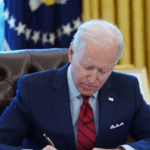NATO Secretary General Mark Rutte highlights the need for increased defense spending and production, warning of serious challenges in the next 4-5 years if allies fail to act.
NATO Secretary General Mark Rutte has stated that while there is no immediate threat of a Russian attack on alliance territory, the future presents significant concerns if defense spending and production are not substantially increased.
In an interview with dpa, Rutte reassured NATO member states, saying, “There’s no reason for fear right now.” However, he cautioned, “If we don’t spend more and produce more, we will face serious problems in four or five years.”
Russia’s Growing Defense Production
Rutte noted that since the onset of the war in Ukraine, Russia has significantly expanded its defense production capabilities. Despite this, NATO allies have been slow to ramp up their own defense manufacturing.
“We need to increase defense production and expand our industrial defense base,” Rutte urged. “This includes creating new production lines and adding shifts because we are not producing enough military equipment for long-term defense.”
The Trump Factor and NATO’s Defense Goals
Rutte anticipates pressure from U.S. President-elect Donald Trump, who has consistently demanded that NATO allies meet or exceed the defense spending target of 2% of their Gross Domestic Product (GDP). During his first term, Trump threatened to withdraw the U.S. from NATO if allies failed to meet this requirement.
“He [Trump] will demand that we do more. And he’s right. We need to do more,” Rutte said.
While several European NATO members have reached the 2% spending goal, Rutte emphasized that even this may not suffice. He refrained from speculating on whether the defense spending target should increase to 3% or more but acknowledged that the issue would be a focal point of the upcoming NATO summit in June.
Future Spending Expectations
During his campaign, Trump argued that NATO members should allocate 3% of their budgets to defense, with reports suggesting he may raise this demand to 5%. Such increases would necessitate significant policy adjustments and budget reallocations for many European nations.
The Road Ahead for NATO
As NATO prepares for its next summit, the alliance faces mounting pressure to address gaps in its defense readiness. With growing Russian capabilities and the prospect of heightened demands from the U.S., NATO’s future strategy will be crucial in maintaining its collective defense posture.







